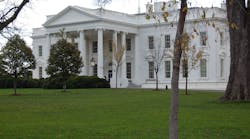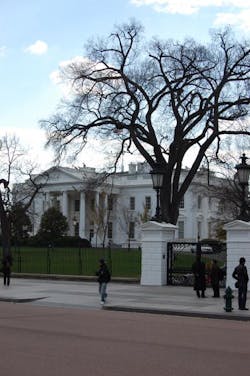So in this last post regarding my discussion with David Kelly about the federal regulatory process – you can go here and here for parts one and two, respectively – the subject of “staying in scope” and “administration change” are the topics, largely because (hello) a seismic U.S. political shift is now preparing to go into overdrive as President-elect Donald John Trump takes over from President Barrack Hussein Obama.
One of the interesting things Kelly explained to me about the process of turning a “notice of proposed rulemaking” or NPRM into a truly finalized rule is that it must “stay in scope,” meaning it must stay focused on its original premise. If it starts to “wander,” for lack of a better term, outside of its original intent – and regulators do like to wander on occasion – another comment period is needed.
“Staying in scope is critical,” he said. “Now, if there are significant changes needed [to a proposed rule] and even if you stay in scope, you file a request for additional comments – and you put that change out for comment. This allows you to manage through the scope issue.”
Now, if a lot of changes do occur between the NPRM and the final rule, they must come from the comments, Kelly stressed.
“For example, you cannot in an NPRM specify a 6-in. widget and then in the final rule change that to a 4-in. widget – unless there is a comment saying in the NPRM saying, ‘you should consider a 4-in. widget,’” he pointed out. “All information has to be submitted in the document.”
Here’s another nicety I am sure many trucking firms think is key when it comes to regulation: the economic impact of rulemakings, which is a hotly debated topic regarding Obama-era regulatory activity, especially where the Department of Labor is concerned.
Kelly noted back in part one of our regulatory discussion that an economic impact analysis of any proposed rule must be conducted (though not everyone necessarily agrese with the eventual figuring) but this not a “one and done” calculation.
“The economic impact statement is done at each stage in the rulemaking process,” he said. “For the NPRM there will be one and for the final rule there will be one. Now, the economic impact statement on the final rule should not be as exhaustive on the one done for the NPRM because, theoretically, the final rule is not going to change a lot – you are just making an impact statement about any specific changes in the rule. That is still a lot of work, but you are not doing it from scratch.”
Lastly, a final and unusual twist is being added to the regulatory process, one that occurs only infrequently: the transition between two largely politically-opposed Presidential administrations.President Obama is furiously pushing though a host of what’s termed “midnight regulations” and according to one story roughly 145 with a projected economic impact of $21 billion have been enacted since last November. Just as fast, though, President-elect Trump and the Republican-controlled Congress are planning an equally quick rollback for most of them.
Thus the question here is this: can such rollback effort succeed? It can, in certain cases, due to the “Congressional review” caveat, Kelly said
“A rulemaking can’t become effective unless Congress has a chance to review it within 60 days – and a rule does not become truly ‘final’ while it is under review for those 60 days,” he explained. “What typically happens, then, when a new President comes in, is that they will withdraw all pending rulemakings that have not been finalized for their own internal review.”
So basically, the effective “final” date to get regulations published isn’t Jan. 20 in the “Presidential transition” situation we’re now experiencing; it was actually back on Nov. 20 last year when rules needed to be finalized.
“They [the Obama administration] had to get rules published and sent to Congress before that day; otherwise, they’d be subject to a review by the new administration,” Kelly explained.
We’ll see how that regulatory back-and-forth sorts itself out after Jan. 20.





